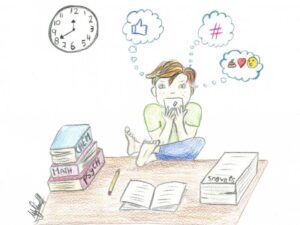Tips For Developing Effective Questioning Techniques.

Tips For Developing Effective Questioning Techniques.
Questions are still the most frequently used teaching tool.
However, not all questions are created equally.
Some are highly effective; others can be useless or even harmful.
There is an art and a science to effective questioning.
Here are tips gleaned from outstanding teachers and research for improving teachers’ use of questions:
#01
- As part of lesson planning, list the process questions to ask.
- Effectively worded questions can make a good lesson superb.
- Develop a logical sequence and strive for clarity in your
#02
- Challenge the whole class to respond mentally.
- When you ask a question, pause and then select the person to respond.
- Choosing the answerer randomly allows even the shiest child to become involved in the class discussion.
- The teacher’s encouragement and support can reduce anxiety and make the lesson a successful learning experience.
- It is best for the teacher to build on small successes by asking open-ended questions rather than factual-recall
- Unfortunately, researchers have observed that teachers ask low-ability students fewer questions and praise them less often when they respond correctly.
#03
- Wait at least five seconds after directing a question before saying anything
- Most teachers allow their students less than two seconds on average to answer a
- Permitting the student a reasonable amount of thinking time is essential, especially if you are asking for more than a recall of a single
- The length and quality of students’ responses increase when teachers allow more wait time.
#04
- Use closed-ended questions when you are seeking information, facts, or a commitment.
- The closed-ended question is most effective in assessing student mastery of specific
- Generally, avoid asking yes-or-no questions in your lessons.
#05
- Open-ended questions (beginning with how, why, or what) usually allow greater latitude in the student’s response with a variety of possible answers (How can air pollution be decreased? Why do people change careers?).
- A single correct answer does not exist.
- Such open-ended questions are most crucial in stimulating students’ creative abilities and developing higher-level cognitive processes such as evaluation, hypothesis generation, analysis, and synthesis.
#06
- What the teacher does after a student responds to a question significantly influences the group discussion process.
- Students who are ridiculed or intimidated will become increasingly reluctant to participate in discussions.
- No constructive end can come from put-downs, whether the teacher or students initiate them.
- People, including students, have a right to make mistakes and a responsibility to learn from those
- A positive class climate is attained when students feel accepted and sufficiently open to take risks even at the price of sometimes being incorrect.
#07
- Encourage students to respond in some fashion, even if they aren’t completely sure of the
- Rephrase the question or provide cues, but don’t just accept “I don’t ”
- Probe students’ responses for clarification and to stimulate further
- “Why?” is an effective probing question to force the student to a deeper level of thought.
#08
- Avoid multiple questions.
- Barraging students with a series of questions often only confuses them and obscures the lesson’s
- One question at a time posed clearly and concisely will more likely yield a clear and concise response.
- Effective teachers keep a balance between calling on volunteers and non-volunteers.
- Particularly when it is likely many non-volunteers know the answer, calling on a non-volunteer is better.
#09
- Occasionally have all students jot down an answer to your question before calling on one person to share the
- Also, for variety have all students share their answers to your question in pairs or small groups.
- Call on a few groups to report their best answers to the whole class.
#10
- Challenging questions seem most effective for classes of high-ability students.
- A mixture of higher-order and lower-level cognitive questions seems to work best with mixed-ability classes.
- Low-level cognitive questions seem to work best when teaching basic skills.
- Effective teachers ask a combination of both low- and high-level cognitive questions.
#11
- Strive to ask questions that yield a high level of correct responses; research suggests around 70 percent is the optimal success level.
- Some evidence suggests that the most successful strategy is to begin a lesson with lower-level questions and to use higher-level questions as the lesson progresses.
- Learn to allow students to talk more.
- Typically, teacher talk consumes 70 percent of class discussion time.
#12
- Acknowledge correct responses, but be specific in your praise.
- What exactly was appropriate or creative about the student’s response?
- Avoid the cliché “Very good” in response to every question.
- Save genuine praise for the response that is truly
- Occasionally ask the student to repeat the question before replying.
- This assures students are listening and understand the question.
#13
- Give students an equal opportunity to respond to your questions.
- Research shows that students down the middle and across the front of the classroom get called on more frequently.
- Also, higher-ability students tend to get called on more than lower-ability students when they raise their hands.
#14
- Research supports permitting call-out answers with students of a lower socioeconomic level, particularly at the elementary level.
- With classes at a higher socioeconomic level, students should be acknowledged before giving their answers.
- In the latter case, students are typically more assertive and eager to respond, creating more chaos.
- Without having to seek permission to speak, lower-ability students are more likely to
- A risk of permitting call-out responses is that a few students may dominate class discussions.
#15
- Don’t accept an obviously incorrect answer.
- Gently yet clearly help identify a more appropriate response.
- Acknowledge if an answer is partially correct, but solicit a more complete response from the class before
- Have the student reflect a bit more on the question or your rephrasing of it. Don’t immediately call on someone else.
#16
- Encourage students to ask questions, but don’t just do it by saying, “Any questions?”
- Have each student write down one question, or have them pair up to make a list of questions related to the topic.
- Real learning is most likely when students are genuinely curious and enthusiastically generate their questions.
- Encourage them to ask questions of each other as well as of you.
#17
- Be wary of asking why questions to confront misbehavior.
- When we ask why questions about a person’s behavior (“Why did you do that?”), we are generally seeking an argument, not an explanation.
- Why questions often put the student on the defensive, yielding a wisecracking defensive answer.
- A question such as “What are you doing?” is more effective in focusing the student’s attention on his or her misbehavior.
Join Enlighten Knowledge WhatsApp platform.
Join Enlighten Knowledge Telegram platform.






Hi there! I could have sworn I’ve been to this website before but after reading through some of the post I realized it’s new to me. Anyways, I’m definitely happy I found it and I’ll be book-marking and checking back frequently!